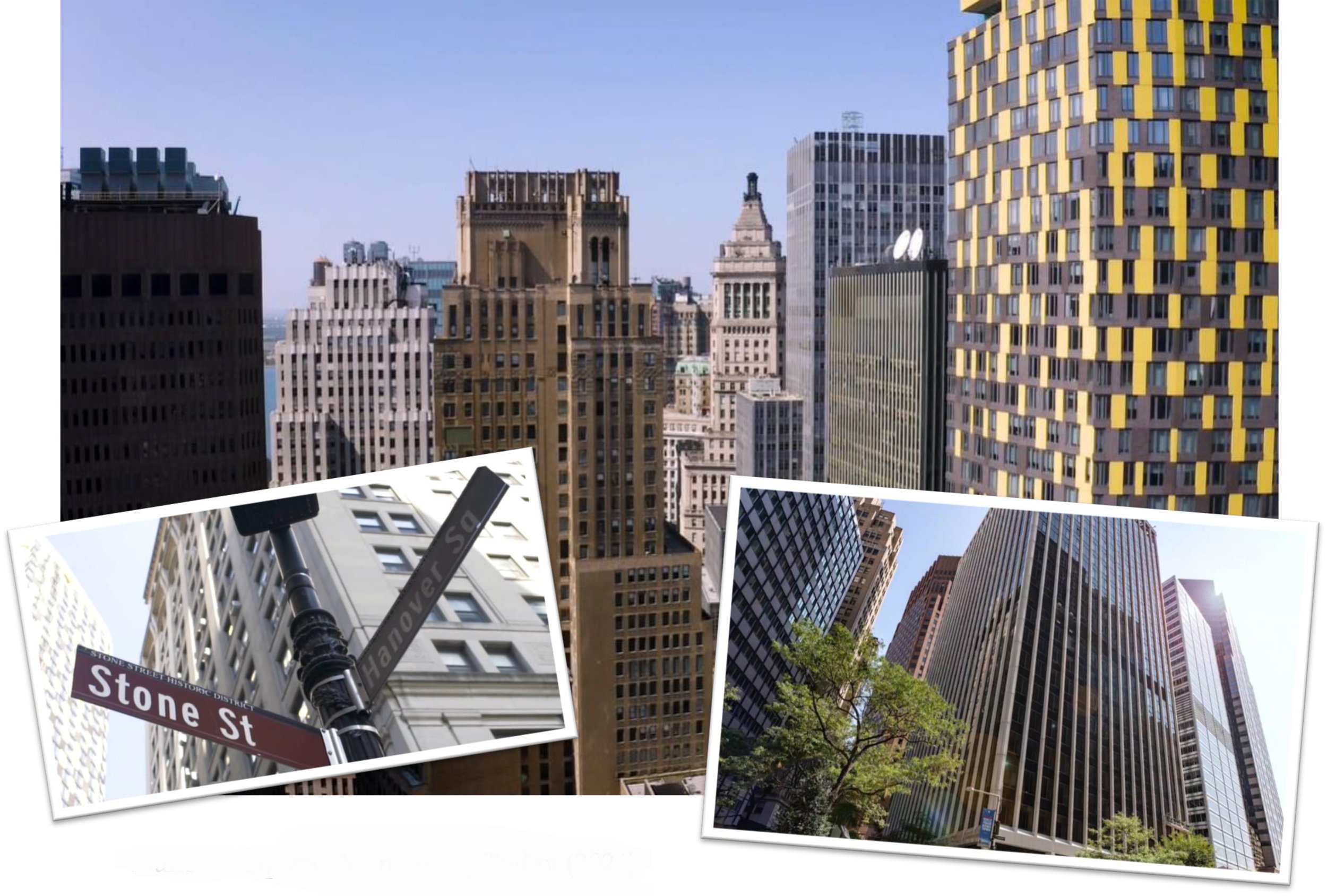Hanover Square, Manhattan c. 1658
oil, 18" x 31"
$30,000
Hanover Square lies a few blocks southeast of Wall Street in lower Manhattan. Today it is difficult to imagine this busy center of international commerce as a simple unpaved street in the colonial Dutch village of New Amsterdam. New Netherland was one of the largest and most productive of the Dutch colonies. From 1614 to 1664, it encompassed most of New York and New Jersey, and a sizable portion of Connecticut, Delaware and Pennsylvania.
Hanover Square, Manhattan, c. 1658 is very much a painting, but it is more than that. It is a portal through which we see a city that is hidden today. What we feel in the image is the openness of the sky, the simplicity of a street of small houses, and the tired age of a thatched barn, a remnant of an earlier time. The farmer and his cow suggest the basic level of existences in the small community. Merchants talk, the goat rests, the chickens scratch out hidden seeds while an older woman, perhaps a slave, carries a bundle of sticks on her back as she trudges up William Street then known as the “Burgher’s Path.”
Many of Len Tantillo’s paintings of Manhattan are based on this redrawing of ‘The Castillo Plan,’ (shown above) the only known plan of New Amsterdam, what lower Manhattan looked like circa 1660. Hanover Square was located in the lower right corner of the Plan.
Hanover Square, Manhattan, Today
Hanover Square, Manhattan, framed dimensions: 26” x 38”



